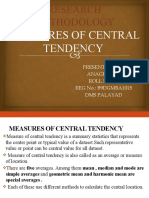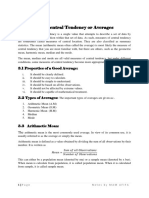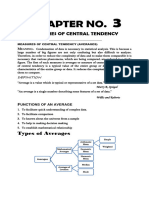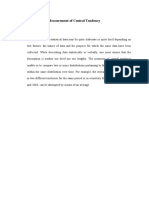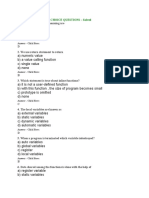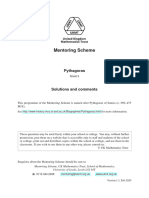0% found this document useful (0 votes)
34 views8 pagesWeek 4
The document discusses measures of central tendency, which describe how data clusters around a central value, including the mean, median, and mode. It elaborates on the arithmetic mean, geometric mean, harmonic mean, and trimmed mean, providing formulas and examples for calculating each. Additionally, it highlights the advantages and disadvantages of the arithmetic mean and explains the robustness of the trimmed mean against extreme values.
Uploaded by
erifeoluwasimikadriCopyright
© © All Rights Reserved
We take content rights seriously. If you suspect this is your content, claim it here.
Available Formats
Download as PDF, TXT or read online on Scribd
0% found this document useful (0 votes)
34 views8 pagesWeek 4
The document discusses measures of central tendency, which describe how data clusters around a central value, including the mean, median, and mode. It elaborates on the arithmetic mean, geometric mean, harmonic mean, and trimmed mean, providing formulas and examples for calculating each. Additionally, it highlights the advantages and disadvantages of the arithmetic mean and explains the robustness of the trimmed mean against extreme values.
Uploaded by
erifeoluwasimikadriCopyright
© © All Rights Reserved
We take content rights seriously. If you suspect this is your content, claim it here.
Available Formats
Download as PDF, TXT or read online on Scribd
/ 8








